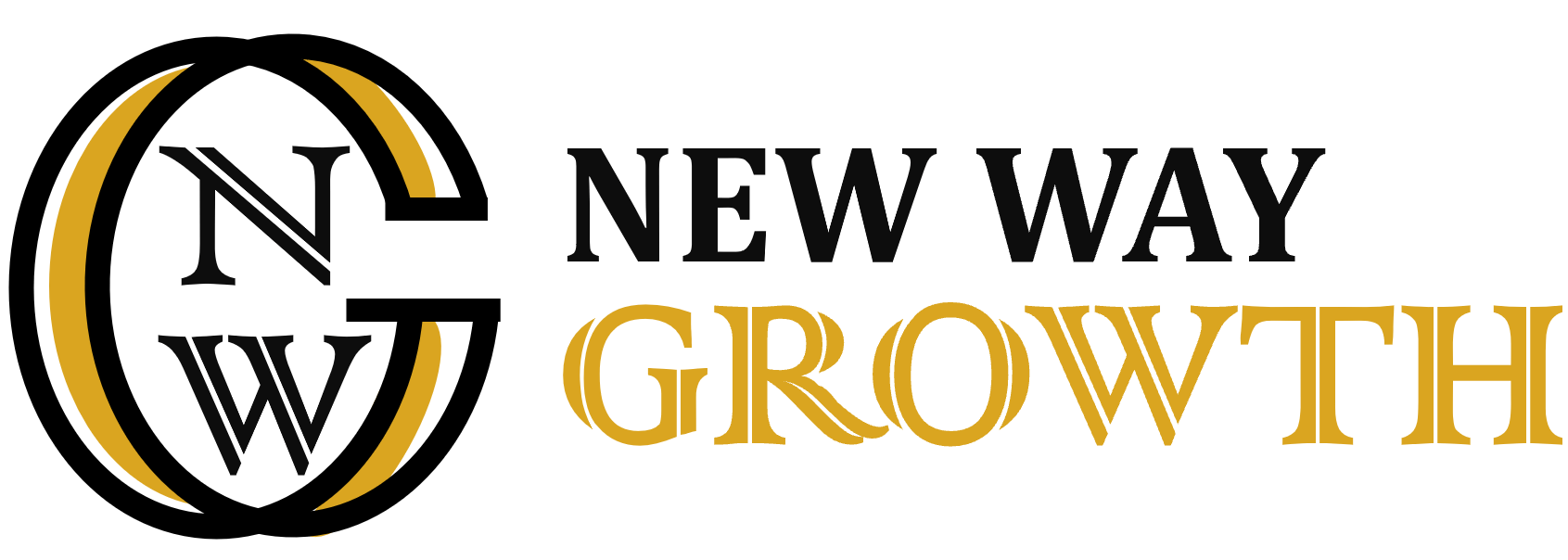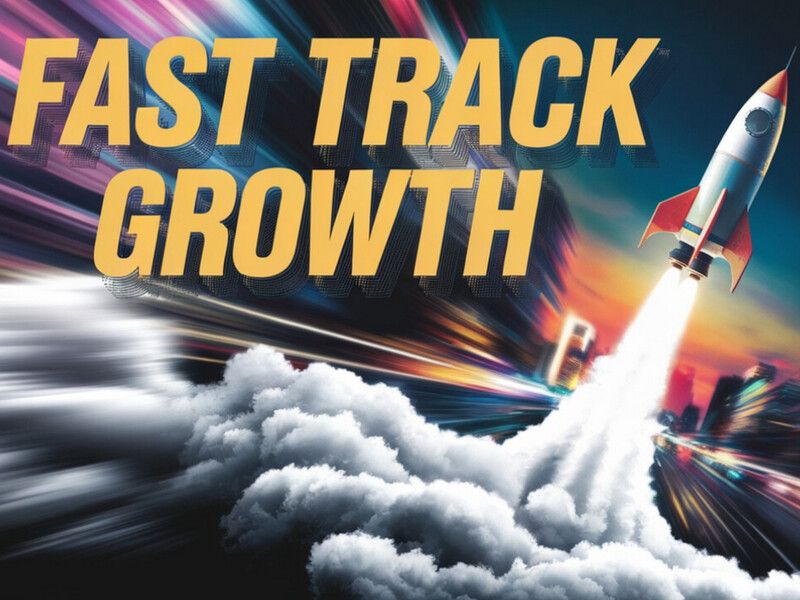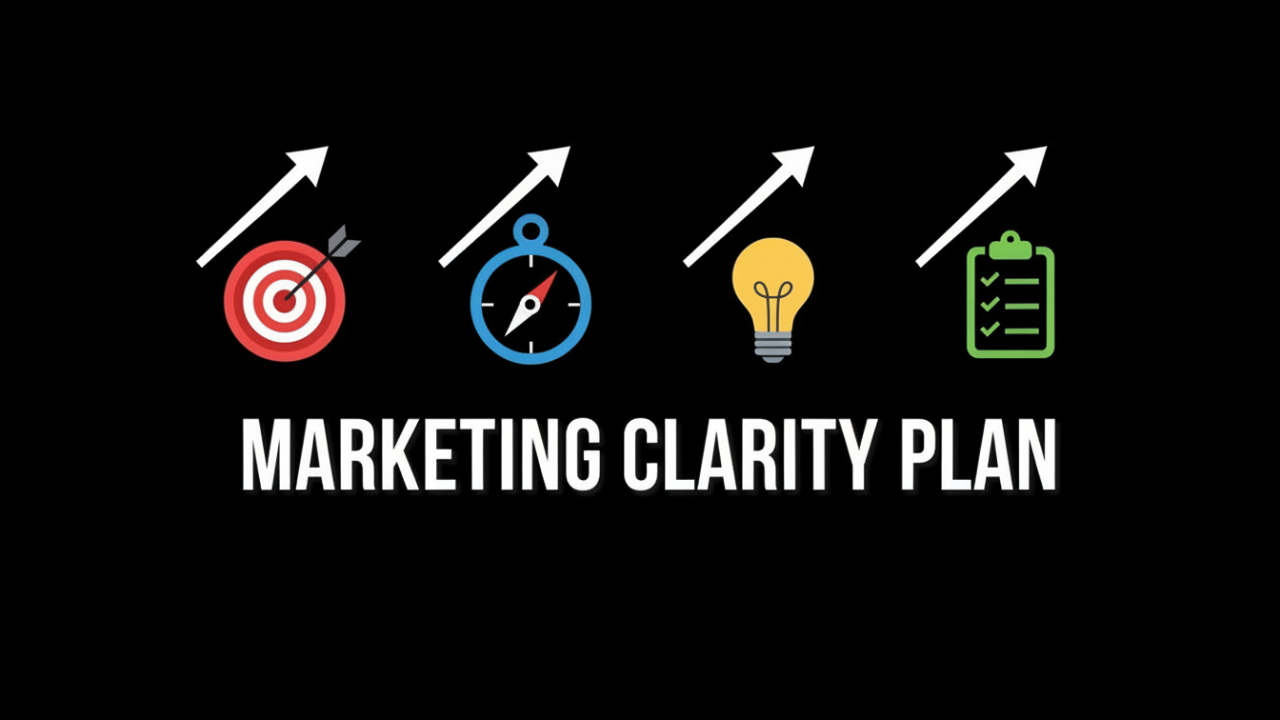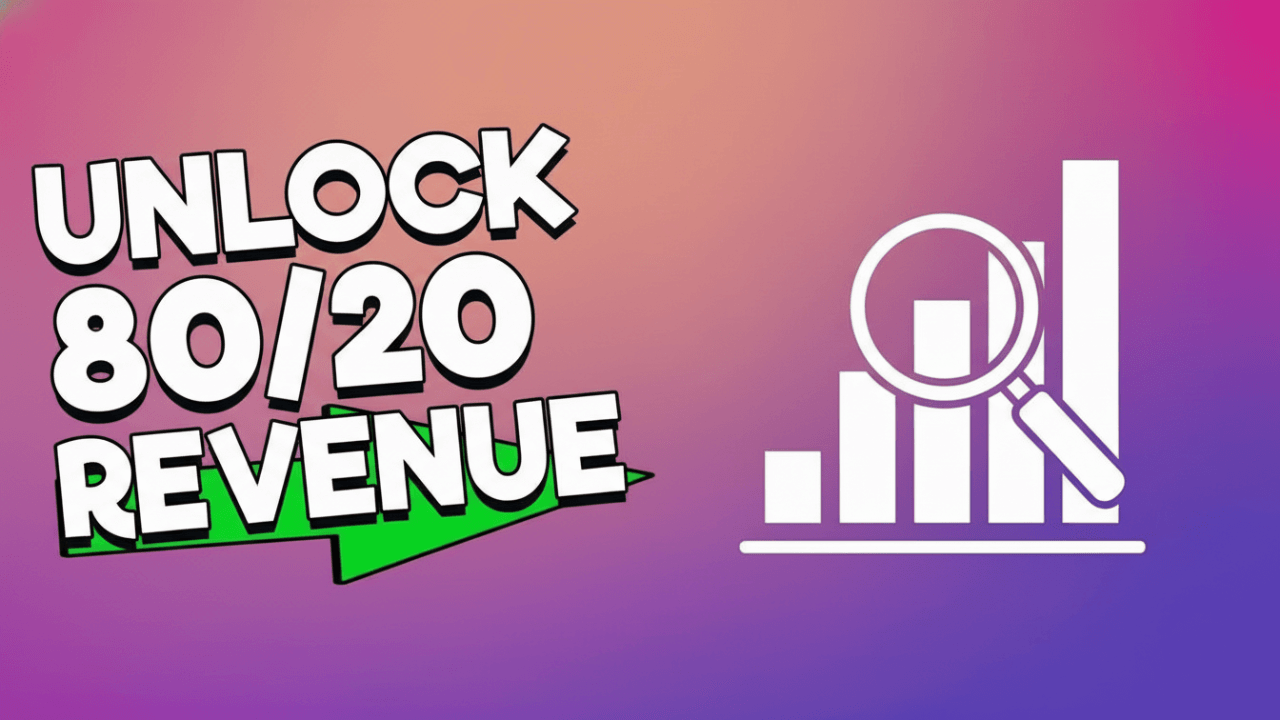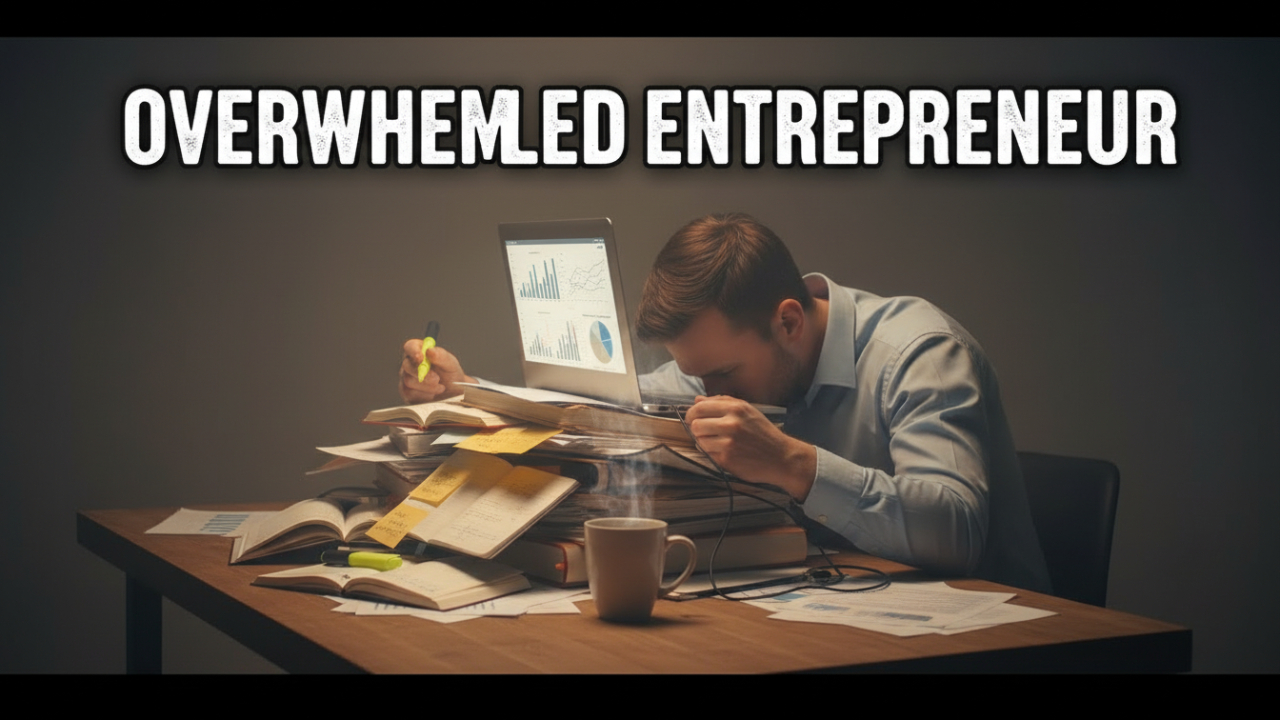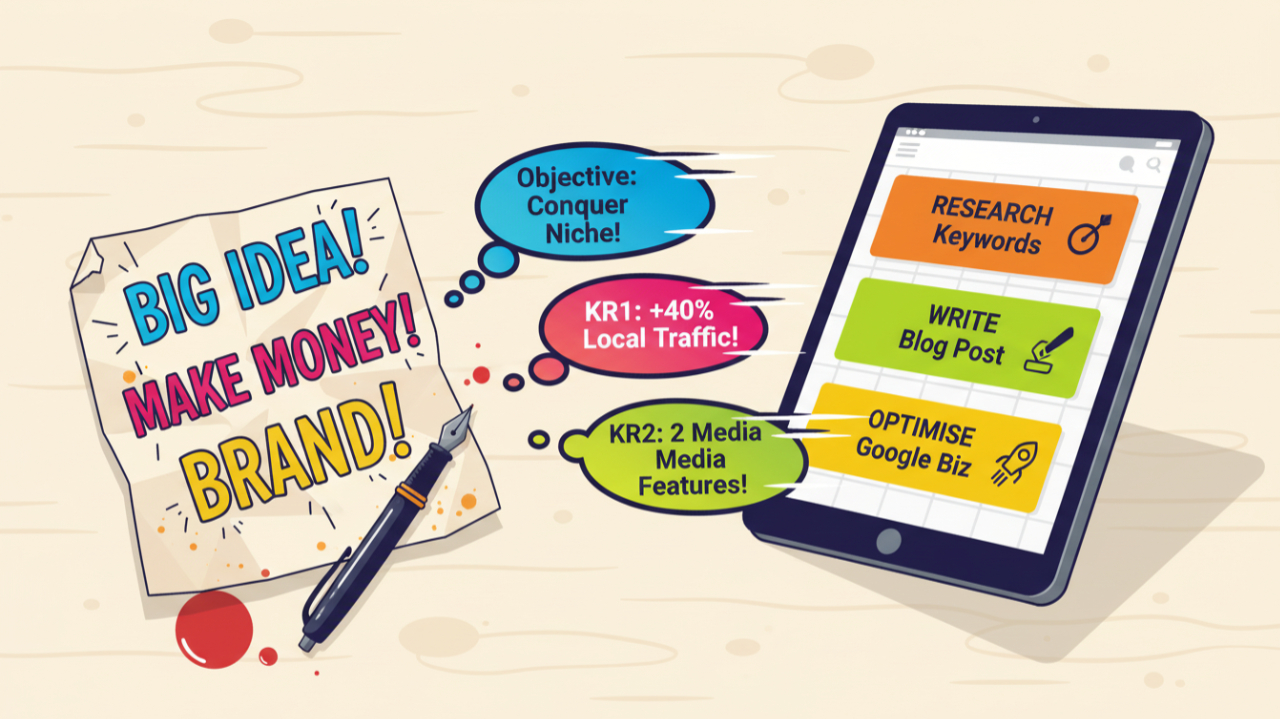The Hidden Reason Your Team Leaves Every Meeting Less Energised Than When They Walked In
How do you feel when the calendar notification for your weekly management meeting pops up? Is it a jolt of excitement, a feeling of, “Great, this is where we make progress”? Or is it a quiet, internal sigh? A sense of resignation as you prepare for another hour of what feels suspiciously like Groundhog Day.
You know the scene. The same updates, the same familiar roadblocks discussed in slightly different ways. Someone talks about a problem, someone else offers a solution that was already dismissed two weeks ago, and a decision gets deferred until ‘we have more data’. Everyone nods, closes their laptops, and leaves the room feeling a little less energised than when they walked in. You’ve just spent an hour of your team’s collective time and payroll, and what have you actually achieved? Not much.
For years, I thought the problem was the meeting itself. Maybe the agenda was wrong. Maybe we needed a better facilitator. Maybe we should just ban PowerPoint. We tried stand-up meetings, walking meetings, meetings with no chairs. And while some of those things helped a little, they were just plasters on a much deeper wound.
The truth, which took me a while to see, is that chronically unproductive meetings are almost never about the meeting format. They are a symptom of a much larger, more insidious problem: a fundamental disconnect between your day-to-day operations and your company’s core strategy. Your team isn’t rowing in circles because they’re bad at rowing; they’re rowing in circles because nobody has pointed to the finish line on the horizon and said, with absolute clarity, “That’s where we’re going.”
The solution isn’t another productivity hack. It’s a strategic reset. It’s about creating a powerful, direct line of sight from your grand vision to the tasks on this week’s to-do list. And the most effective way I’ve found to do that is through a dedicated workshop I call the "Vision-To-Action Session." It’s designed to restore clarity, rebuild alignment, and inject a powerful sense of purpose back into the very meetings that have become so draining.
Why Your Meetings Have Become So Unproductive
I once saw a strategic plan for a company of fifteen people that was over sixty pages long. Sixty. It had appendices, a glossary of terms, and charts so complex they looked like the schematics for a nuclear submarine. The founder was incredibly proud of it. And guess how many people in his company had actually read it, let alone understood it? You guessed it. Zero.
This is probably the most common trap. We fall in love with the idea of being ‘strategic’ and think that means it has to be long, dense, and full of impressive-sounding business jargon. We talk about ‘synergising core competencies’ and ‘leveraging paradigm shifts’ until the words lose all meaning. The result is a document that is completely impenetrable to the very people who are supposed to be implementing it.
Your team, especially in a small business, doesn’t have time to decipher a corporate thesis. They need clarity, not complexity. They need to be able to glance at the plan and know, instantly, what the main goal is.
Think about it this way. If you can't explain your strategy to someone in the time it takes for a lift to go up three floors, it’s too complicated. The beauty of a great strategy isn't in its length or its vocabulary; it's in its elegant simplicity. It should be a compass, not an encyclopaedia. A compass has one job: to point north. It’s simple, clear, and unbelievably useful when you’re lost. An encyclopaedia contains all the information in the world, but it’s useless when you need to make a quick decision about which way to turn.
The benefits of simplicity are huge. A simple, focused plan is memorable. Your team can hold the key objectives in their heads. It’s inspiring. People can see exactly how their work connects to the big picture. And most importantly, it’s actionable. It gives people a clear filter for making decisions. When a new opportunity comes up, they can ask, "Does this move us closer to our one big goal?" If the answer is no, it's easier to say no.
So, take a hard look at your plan. Is it a compass or an encyclopaedia? If it’s longer than a few pages, I can almost guarantee it’s not being used. The goal should be a plan so clear and concise that you could print it on a single A4 page and stick it on the wall for everyone to see.
The Hidden Disconnect: When Strategy Stays in the Boardroom
Most businesses with more than a handful of employees have a strategy. It might be a beautiful, 20-page document with charts and five-year projections, or it might be a set of goals sketched out on a whiteboard during an offsite. The leadership team is usually crystal clear on it. They’ve debated it, refined it, and they live and breathe it.
The problem is, that clarity often fails to cascade down into the day-to-day reality of the rest of the company. The strategy becomes a theoretical document, a piece of corporate art that lives on a server somewhere, but it doesn’t inform the hundreds of micro-decisions your team makes every single day.
Think about the people in your weekly management meeting. Does your lead developer really understand how fixing a particular bug contributes to the strategic goal of ‘increasing customer retention by 15%’? Does your content manager see the direct link between their blog post schedule and the company’s objective to ‘become the leading voice in the industry’? If the answer is ‘maybe not,’ then you have a disconnect.
When people don’t understand the ‘why’ behind their work, they can’t be expected to make the best decisions about the ‘what’ and the ‘how’. They operate on assumptions, on gut feelings, or on what’s directly in front of them. This isn't their fault; it's a failure of leadership to translate vision into action.
The risks of letting this disconnect fester are enormous. The most obvious is the colossal waste of time and money. Calculate the hourly cost of every person in your weekly meeting. Now multiply that by 52 weeks. It’s a sobering number. But the hidden costs are even more damaging. Morale plummets when talented people feel their efforts are pointless. Accountability dissolves because if everything is a priority, then nothing is. And while your team is spinning its wheels in misaligned meetings, your more focused competitors are quietly eating your lunch. Execution stalls, not for a lack of effort, but for a lack of unified direction.
The Antidote: What Exactly Is a Vision-To-Action Session?
So, how do you fix this? The answer isn’t another meeting. In fact, it’s the opposite. It’s a dedicated, focused workshop designed to make all your other meetings exponentially more productive. It’s a "Vision-To-Action Session."
Think of it as a strategic reset button. It’s a structured, facilitated session where you pull key team members away from the daily grind for a few hours to bridge the gap between the high-level company vision and the nitty-gritty of operational execution. It’s about taking that beautiful strategy document off the digital shelf, dusting it off, and making it real, tangible, and actionable for everyone in the room.
The purpose is threefold:
- Clarify: To ensure every single person has the same, unambiguous understanding of the company’s vision and, more importantly, the top strategic priorities for the coming period (e.g., the next 90 days).
- Align: To get everyone to agree on how their team’s work and individual responsibilities directly contribute to achieving those priorities. This is where you break down silos.
- Action: To collaboratively define the specific, measurable outcomes, key projects, and clear action steps that will move the company toward its goals.
A Vision-To-Action Session fundamentally shifts your meeting culture. Your regular management meetings stop being reactive forums for discussing problems and become proactive check-ins on a pre-agreed strategic plan. The conversation changes from “What should we do?” to “How are we progressing on the plan we all created and committed to?” It transforms the dynamic from a meandering debate into a focused engine of progress.
The Real Payoff: Four Ways This Transforms Your Business
Investing a few hours in a Vision-To-Action Session pays dividends that go far beyond just fixing your Monday meeting. It creates a ripple effect across the entire organisation.
- Radical Clarity and Focus: The single biggest outcome is clarity. When your team leaves the session, they know exactly what the company is trying to achieve and what the 3-5 most important things are to get there. This clarity is a superpower. It empowers them to say “no” to distractions and low-value tasks. It simplifies decision-making at all levels because everyone now has a filter: “Does this activity move us closer to one of our core strategic goals?” If the answer is no, it gets questioned.
- A Surge in Ownership and Accountability: People don’t take ownership of tasks they’ve been assigned; they take ownership of outcomes they’ve helped create. Because a Vision-To-Action Session is collaborative, your team isn’t just being told the strategy; they are actively involved in building the plan to execute it. This creates a profound sense of psychological ownership. The goals are no longer “management’s goals”; they become “our goals.” Accountability naturally follows because people are reporting back on commitments, they themselves have set.
- A Genuine Boost in Motivation: Human beings are wired for purpose. We want to know that our work matters. Connecting daily tasks to a larger vision is the most powerful motivator there is. When your team can see a direct line from their project to the company’s success, their work takes on new meaning. They’re no longer just coding a feature; they’re helping the company hit its growth targets. They’re not just writing a social media post; they’re building the brand’s reputation. This intrinsic motivation is far more powerful and sustainable than any bonus scheme.
- Faster, Better-Informed Decisions: With a shared strategic plan in place, your management meetings become lightning fast. Debates about resource allocation are resolved quickly by referencing the agreed-upon priorities. Instead of getting bogged down in opinion, discussions are grounded in data and strategy. “Given our top priority is to expand into the European market this quarter, should we allocate the developer’s time to Project A or Project B?” The answer becomes obvious. You empower your team to make better decisions independently, reducing bottlenecks and accelerating your pace of execution.
How to Run Your Own Vision-To-Action Session
Running one of these sessions doesn’t have to be complicated, but it does need to be facilitated and intentional. It’s not a casual chat over a cuppa; it’s a structured workshop. Here’s a simple framework.
Preparation is Key:
Before the session, send out a brief pre-read. This should include a concise summary of the company’s long-term vision and its current strategic plan. Ask participants to come prepared to discuss two things: 1) What is the single biggest opportunity we have to advance our strategy right now? and 2) What is the single biggest roadblock holding us back?
The Session Itself:
- Vision & Strategy Review: The leader of the business kicks things off. This isn’t a dry presentation. It’s a passionate reminder of why the company exists. What is the big, exciting future you’re all trying to build? Then, clearly state the 1-3 strategic priorities for the next 90 days. Be specific. “Increase revenue” is not a priority; “Land 10 new enterprise clients in the finance sector” is.
- Alignment & Roadblock Analysis: This is the core of the workshop. Using a whiteboard, break the team into small groups. Have them discuss and identify the key activities and projects that will directly impact the strategic priorities. Then, reconvene and use a simple framework like a “Start, Stop, Continue” analysis or a SWOT (Strengths, Weaknesses, Opportunities, Threats) focused specifically on your strategic goals. The goal is to get a brutally honest assessment of where you are and what’s in your way.
- Define Actionable Outcomes: Now, turn the insights into action. For each strategic priority, define what success looks like. What are the key results you need to see? What are the main projects that will get you there? Brainstorm a list, then force-rank them. You can't do everything. What is most critical?
- Assign Ownership: This step is non-negotiable. Every key result and project must have a single person’s name next to it. Not a department, not a committee—one individual who is responsible for driving that outcome forward. This creates ultimate clarity and removes ambiguity. Define a clear deadline for each item.
- Sustaining the Momentum: The session is just the beginning. To make it stick, you must integrate its outputs into your daily operations. The list of priorities and owners should be visible everywhere—on a dashboard, in a dedicated Slack channel, on a wall in the office.
Then, structure your weekly management meeting around it. The first agenda item should always be a 5-minute review of the Vision-To-Action plan. Go down the list of key results: Are we on track (green), is there a potential issue (amber), or are we behind (red)? The rest of the meeting is then spent problem-solving the ‘reds’ and ‘ambers’. That’s it. Your meetings now have a clear, unshakeable purpose.
The Lasting Impact on Your Business
I’ve seen this process work time and time again. I remember working with a growing B2B tech company whose weekly meetings were notoriously painful. They were full of smart, dedicated people, but their conversations were a tangled mess of product tweaks, marketing ideas, and sales complaints.
After a single Vision-To-Action session, the change was palpable. They crystallised their focus on one strategic goal for the quarter: improving their customer onboarding experience to reduce churn. Suddenly, their weekly meetings had a laser focus. The conversation wasn't about random features anymore; it was about, "Will this change make the first 30 days better for a new customer?" Within three months, their early churn rate had dropped by 20%, and team morale was higher than ever. They weren’t just busier; they were more effective. That’s the difference between motion and progress.
It’s Time to Stop Blaming the Meeting
If you’re tired of unproductive meetings that drain your team’s energy and stall your company’s growth, it’s time to stop tinkering with the agenda and start addressing the root cause. Your meetings aren’t broken; they’re just disconnected.
A lack of strategic alignment is the silent killer of execution and morale in so many businesses. But it’s a solvable problem. By investing the time to consciously and collaboratively connect your grand vision to your daily actions, you can transform your meetings from a necessary evil into your company’s most powerful engine for progress.
Don’t let another quarter slip by in a haze of circular conversations and stalled decisions. It’s time to restore clarity, focus, and purpose to your team’s work.
Ready to bridge the gap between your vision and your execution? Learn more about how a facilitated
Vision-To-Action Session can transform your business.
Additional Resources:
For further material on related topics, consider exploring the following:
Ready to Break Free From the Fog of Daily Chaos?
Your vision is too important to let it slip away. Don’t stay stuck, watching your strategy gather dust on the whiteboard while urgent tasks take over. If you’re serious about transforming your business vision into purpose-driven action and real results, let’s talk.
Take the first step:
Book a no-obligation, honest conversation with Adam at New Way Growth. No sales pitches, just a genuine chat about your goals and the obstacles holding you back.
Reclaim your team’s momentum, energy, and confidence.
Contact us
now and let’s turn your business strategy into unstoppable progress.
Phone: 0330 311 2820
We look forward to helping you discover your unique path to growth, strategies that fit you - not the other way round.
Pay It Forward! Sharing Is Caring!
